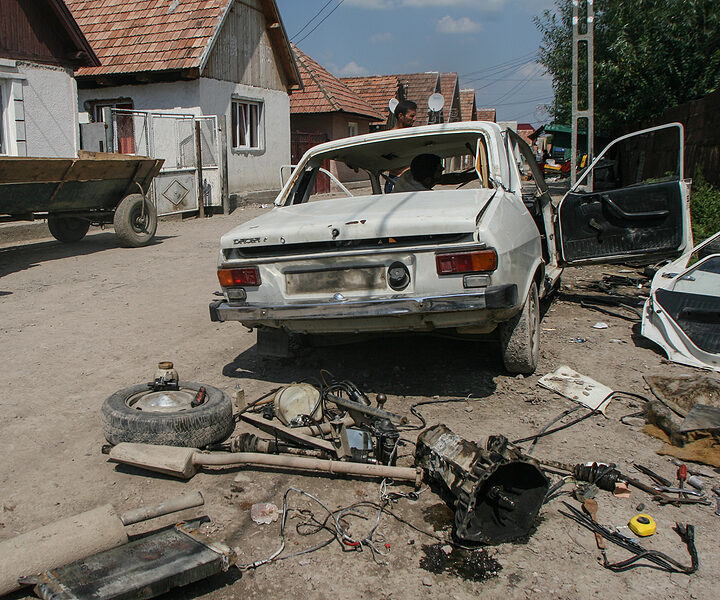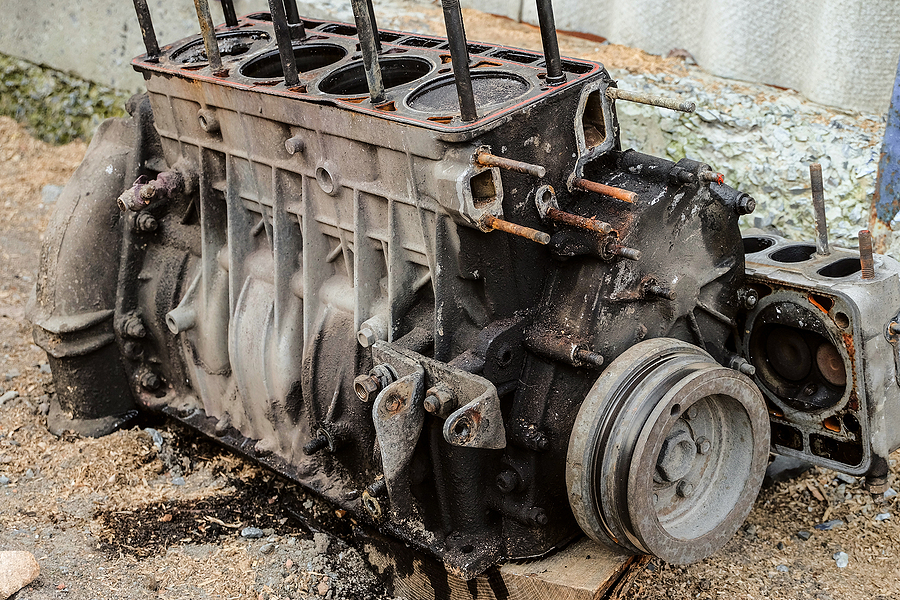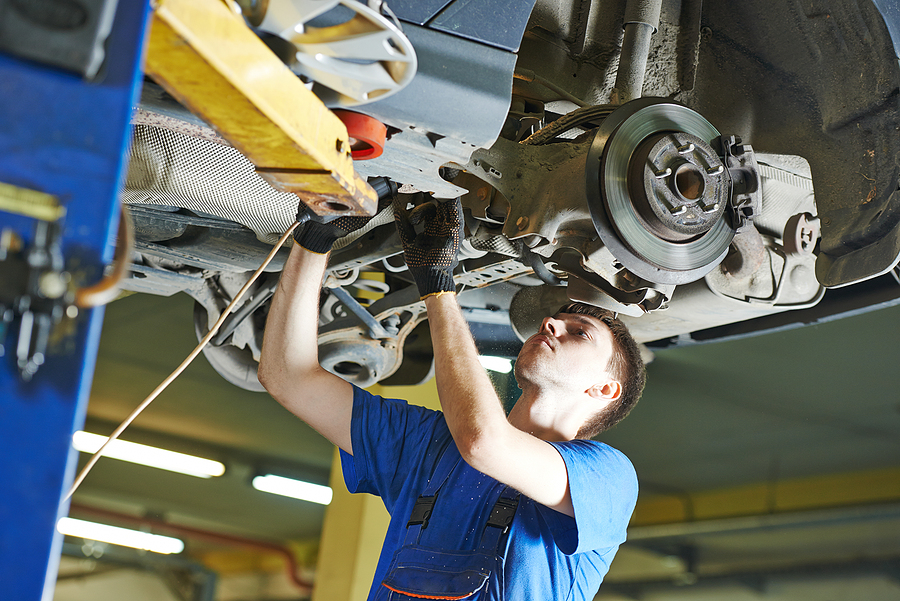If you have an old, non-functional vehicle sitting in your driveway or garage, you might be wondering what to do with it. While many people choose to sell their junk car to a scrap yard, another option is gaining popularity: parting it out. This process involves dismantling the vehicle and selling its individual components. But is this the right choice for you?
Parting out a car can be a rewarding project, both financially and personally. However, it also requires a significant investment of time, effort, and resources. This guide will walk you through the pros and cons of car dismantling, help you determine if it’s a worthwhile endeavor for your situation, and explain the steps involved.

The Advantages of Parting Out a Junk Car
Dismantling a car and selling its parts individually can offer several compelling benefits.
Higher Potential Profit
The primary motivation for many people who part out a car is the potential for greater financial return. While junk car buyers and auto salvage yards offer a convenient way to get cash for junk cars, they typically pay based on the vehicle’s weight and current scrap metal prices.
By selling individual junk car parts, you can often earn significantly more than the car’s scrap value. High-demand items like engines, transmissions, and catalytic converters can fetch a considerable price on their own.
Eco-Friendly Recycling
Parting out a car is an excellent way to recycle. Instead of crushing the entire vehicle, you are salvaging usable components and giving them a second life. This reduces the demand for new parts manufacturing, which consumes energy and raw materials. By ensuring that functional parts are reused, you are contributing to a more sustainable, circular economy in the automotive industry.
Access to Rare and Discontinued Parts
For owners of vintage, classic, or rare vehicles, finding replacement parts can be a major challenge. If your junk car is a less common model, parting it out can be a great service to a community of fellow enthusiasts.
You might possess salvage car parts that are no longer in production, making them highly valuable to someone trying to restore a similar vehicle. For example, specific trim pieces, body panels, or interior components for a late 1960s Ford Mustang can be in high demand.
The Disadvantages of Parting Out a Junk Car
Despite the potential rewards, parting out a car is not a simple task. It comes with its own set of challenges that you should consider carefully.
Time, Effort, and Space
Car dismantling is a labor-intensive process. It requires many hours of physical work to safely remove parts without damaging them. After disassembly, you need to clean, photograph, list, and ship each component. This entire process can take weeks or even months. You will also need a significant amount of space, not just to work on the car, but also to store the parts until they are sold.
Specialized Tools and Knowledge
To properly dismantle a car, you need more than just a basic toolbox. Specialized equipment like an engine hoist, impact wrenches, and a variety of sockets and pullers are often necessary. Furthermore, you need a solid level of mechanical knowledge. Without it, you risk damaging valuable parts or, more importantly, injuring yourself.
Handling Hazardous Materials
Vehicles contain several hazardous fluids, including motor oil, gasoline, antifreeze, and brake fluid. These materials must be drained and disposed of according to strict environmental regulations set by the EPA and local authorities. Mishandling these substances can lead to fines and harm the environment.
Legal and Regulatory Hurdles
There are legal requirements to consider. Depending on your state, you may need to surrender the vehicle’s title to the DMV once it is no longer roadworthy. Additionally, some jurisdictions have regulations about selling used auto parts, which could require special permits or licenses.
Get a Free Offer for Your Junk Car Right Now! ✅
Factors to Consider Before You Begin
Before you grab your tools, evaluate if parting out is the right decision for you.
Your Car’s Condition and Model: Research the demand for parts from your specific car model. Cars like 1990s Honda Civics, Jeep Cherokees (XJ), and early 2000s Toyota Tacomas are often good candidates because their parts are in high demand. If your car has many damaged or worn-out components, its junk car value may be higher as scrap.
Your Mechanical Skill: Be honest about your abilities. If you’re a novice, you may find the process overwhelming and potentially dangerous.
Profitability Assessment: Compare the estimated total value of the parts against a quote from a local junk car buyer. Research prices on online marketplaces like eBay Motors and forums dedicated to your car model. Don’t forget to subtract the costs of tools, storage, and disposal fees.
Time Commitment: How much free time can you realistically dedicate to this project? If you have a busy schedule, the quick cash from an auto salvage yard might be a better option.
Frequently Asked Questions (FAQs)
How do I determine the value of individual parts?
Research completed listings on eBay, check online forums for your car’s make and model, and call local salvage yards to ask about their prices for similar parts. This will give you a good idea of the market rate.
What tools are essential for dismantling a car?
At a minimum, you’ll need a comprehensive socket set, wrenches, screwdrivers, pliers, a jack, and four jack stands. An engine hoist, impact wrench, and specialized pullers will make the job much easier.
Where can I sell the parts I remove from the car?
You can sell parts on online marketplaces like eBay and Facebook Marketplace, in forums dedicated to your car model, or at local swap meets. You can also sell directly to local mechanics or DIY enthusiasts.
What are the legal requirements for parting out a car in my state?
Regulations vary by state. Contact your local DMV to understand the rules regarding title surrender and selling used parts. You may be required to obtain a dismantler’s license if you plan to do this regularly.
Is it worth parting out my car, or should I sell it for scrap?
If your car has many high-demand parts in good condition and you have the time, tools, and space, parting it out can be more profitable. If you need a quick, hassle-free solution, selling it for scrap is the better choice.
Your Next Step
Parting out a junk car can be a rewarding project that maximizes the vehicle’s value while promoting recycling. However, it is a significant undertaking that requires careful consideration of the time, skill, and resources involved. For many, the convenience and immediate payment offered by selling the car whole is the more practical path.
Ultimately, the decision depends on your personal circumstances and goals. By weighing the pros and cons, you can make an informed choice that best suits your needs.
If you’ve decided that car dismantling isn’t for you, there’s an easy alternative. You can still get a great price for your vehicle without the hassle. Contact Us Today to get cash for your junk car and have it removed quickly and professionally.
Related Post: Hidden Gems: The Most Valuable Junk Car Parts You Might Be Overlooking









